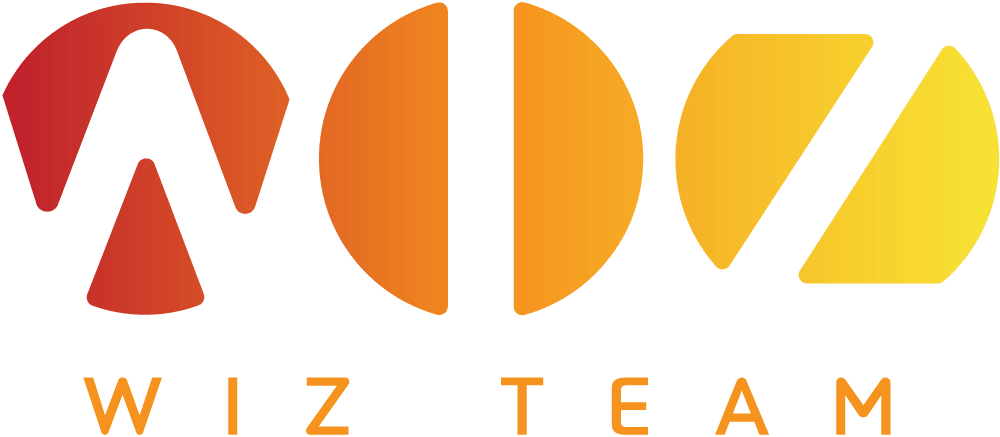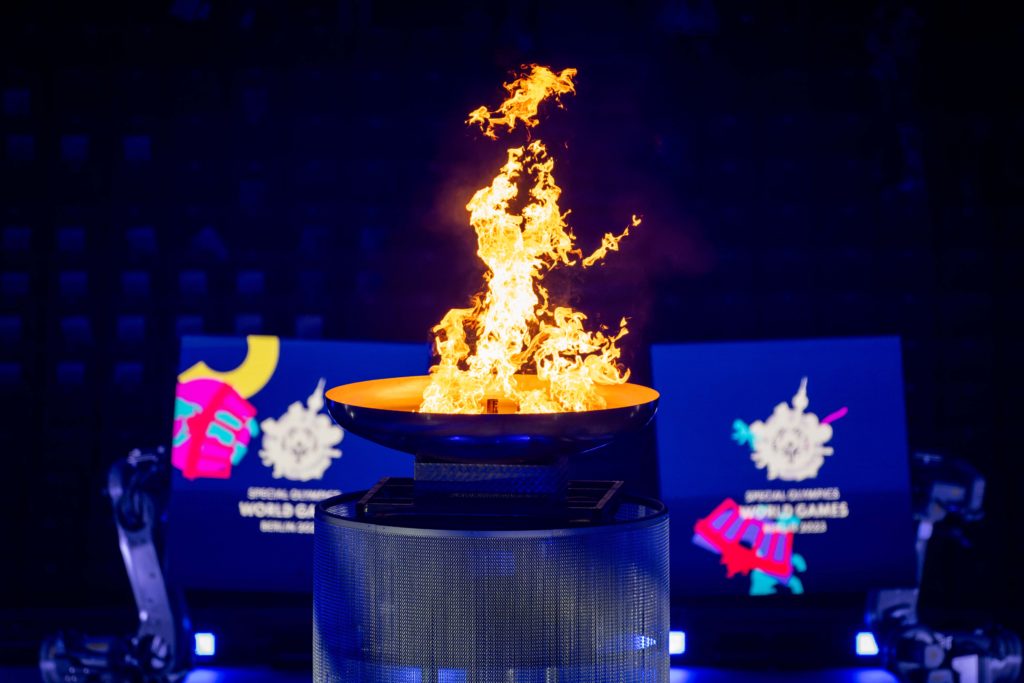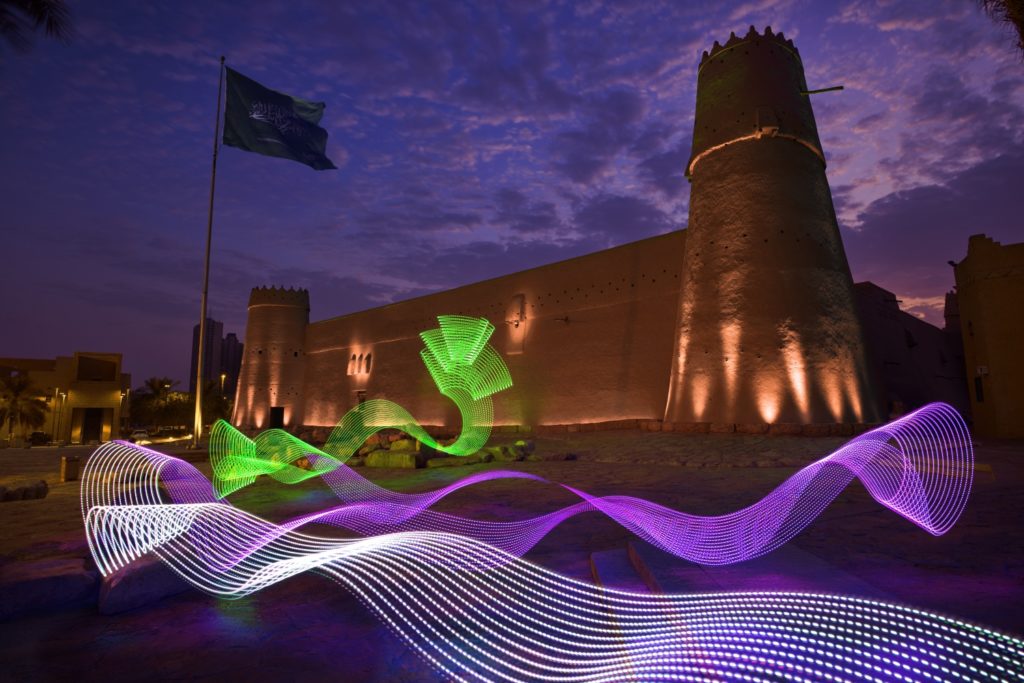Choosing the right types of events is one of the most important decisions you make when planning for business growth, stakeholder engagement, or compliance reporting. Whether it is a product launch, a regulatory summit, or a customer workshop, the format you choose influences how your message is received and how outcomes are measured.
According to a recent report by Statista, the global event industry is projected to reach over $2 trillion by 2028, with corporate events and conferences accounting for a substantial share of this growth.
Professionals in leadership roles are expected to go beyond simply organizing meetings. You need to deliver events that meet data privacy standards, enhance stakeholder engagement, and clearly demonstrate return on investment.
In this guide, you will explore the most relevant types of events, how they support different business goals, and what you need to consider when planning each one. This is not just about event formats. It is about making informed decisions that drive results.
TL;DR
Choosing the right event type is crucial for achieving business goals, audience engagement, and ROI.
Events fall into seven key categories: corporate, social, cultural/entertainment, charity, virtual, hybrid, and pop-up, each with its own planning needs.
Successful events rely on clear goals, the right tools, strong logistics, and audience-focused execution.
Why Choosing the Right Event Format Matters

Not every event is built the same. Whether you’re planning a product launch, an internal training session, or a leadership summit, the format you choose significantly shapes the experience for your team, guests, and outcomes. Picking the wrong type can lead to missed goals, wasted budgets, and disengaged participants.
On the other hand, choosing the right event format helps you focus your time, tools, and team on what really works. Here’s why it pays to understand the different types of events:
It helps match your event format with your main business goal.
You’ll be better prepared to meet what your audience expects.
It allows you to use your time, money, and team more effectively.
You can avoid last-minute problems and reduce confusion during execution.
It increases the chances that your attendees walk away satisfied and involved.
Once you understand why the event format plays a crucial role, it’s time to look at the different types of events you can choose from, each with its own planning needs.
Key Types of Events to Consider When Planning
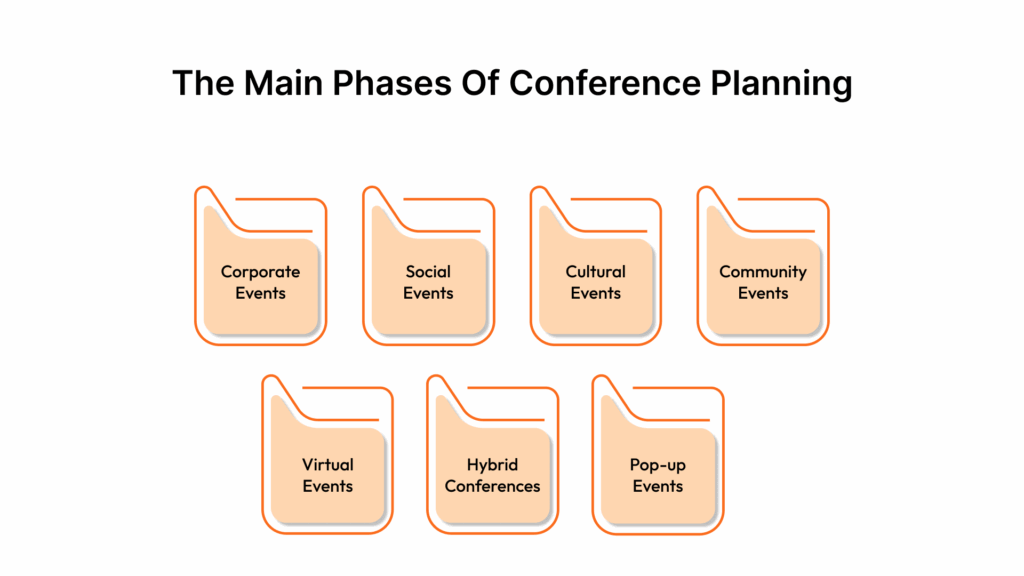
Events come in all shapes and sizes, but behind every successful one is a clear understanding of its purpose. Knowing the category your event falls into helps you structure it more effectively, from logistics and audience size to technical setup and follow-up. It also allows you to select tools, vendors, and platforms that precisely meet your needs.
Below are the most widely recognized types of events, with practical examples and use cases.
1. Corporate Events
Corporate events play a central role in how businesses communicate, grow, and align their people. Whether you’re launching a product, bringing global teams together, or hosting a client-facing seminar, these events help you share important updates, reinforce company goals, and build lasting relationships.
Here are some of the most common types of corporate events:
1.1 Conferences
These are large gatherings often centered around a theme or industry topic. They usually feature keynote speakers, breakout sessions, and networking opportunities.
Example: At the SAP Forum, over 1,000 delegates were able to register, personalize their session agendas, and manage their event experience through Wiz-Team’s Event-Works platform. The system streamlined participant workflows and facilitated easy coordination of sessions for organizers.
1.2. Seminars
Smaller and more focused than conferences, seminars are often educational. They’re typically hosted for a specific group, like clients, investors, or internal teams, and are designed to deliver in-depth learning on a single topic.
Example: A financial firm might run a seminar for clients about managing new tax regulations.
1.3. Trade Shows
Trade shows give companies the chance to showcase products or services to a targeted audience, often within a specific industry. These events include booths, live demos, and one-on-one discussions, making them great for lead generation and product exposure.
1.4. Workshops
Workshops are hands-on sessions where participants are actively involved in learning new skills, solving problems, or developing ideas. They’re ideal for training, team building, or brainstorming new strategies.
Example: A marketing team might attend a creative workshop to build campaigns for the upcoming quarter.
1.5. Corporate Meetings
These include board meetings, team updates, strategy reviews, and quarterly business reviews (QBRs). Though often internal, they require good coordination, clear agendas, and sometimes confidentiality.
Example: A company may hold an all-hands meeting to discuss yearly targets and recognize top performers.
1.6. Product or Service Launches
Launch events introduce a new offering to employees, partners, media, or the public. These events need to be polished and impactful, as they often serve as a first impression.
Example: Apple’s product launches are known for being tightly scripted, engaging, and widely covered.
2. Social Events
Social events bring people together to celebrate life’s milestones or build stronger connections outside of work. Unlike corporate or public events, these are usually more personal in tone. However, they still require careful planning, especially when the guest list grows or logistics become complex.
Here are some common types of social events:
2.1. Weddings
Weddings are among the most detailed and emotionally significant events to plan. Digital tools for RSVPs, schedules, and access control can simplify the planning for large weddings held across multiple venues.
2.2. Birthday Parties and Anniversaries
These events are usually smaller but still require coordination, especially when it comes to invitations, catering, entertainment, and guest preferences. Surprise parties, milestone birthdays, and golden anniversaries often involve multiple moving parts that benefit from light event planning tools.
2.3. Graduation Parties
Graduations mark important academic achievements and are often celebrated with friends and extended family. These events typically include speeches, custom décor, and photo or video coverage.
2.4. Team Building Events
Although organized by companies, these events fall under social gatherings because the goal is to strengthen personal relationships between colleagues. From escape rooms and outdoor retreats to volunteer days, these events require location scouting, transportation, and sometimes external facilitators.
3. Cultural and Entertainment Events
Cultural and entertainment events are built around creativity, shared interests, and emotional connection. They bring people together through music, film, art, or performance and often serve as platforms for artists, communities, and brands to connect with wider audiences.
These events typically require detailed scheduling, effective crowd control, and logistics that prioritize experience. Here are some of the most common types of cultural and entertainment events:
3.1. Music Festivals
These events bring together artists, fans, and production crews for live performances, often across multiple stages and days. Music festivals require extensive planning, encompassing artist scheduling and access control, as well as ticketing and on-site staff coordination.
Example: Coachella, one of the world’s largest music festivals, draws over 250,000 attendees across two weekends. The event involves real-time artist coordination, tiered access for VIP and media, and mobile-enabled entry systems to ensure a smooth experience.
3.2. Cultural Festivals
These festivals celebrate local or national traditions through music, food, performances, and community activities. Planning involves coordinating multiple venues, managing crowd flow, handling vendor logistics, and ensuring accessibility for diverse audiences.
Example: Wiz-Team supported the second annual Noor Riyadh Festival of Lights, a large-scale citywide event in Saudi Arabia’s capital. Using the Event-Works platform, the team managed registration, accreditation, transport, accommodation, and guest communication for over 6,000 participants.
Also Read: Wiz-Team behind Riyadh’s citywide annual festival of light and art.
3.3. Art Exhibitions
These events focus on showcasing artwork, either from a single artist, a collection, or a themed curation. They typically require custom venue setups, security planning, and sometimes RSVP-based access.
Example: An international art show may include digital catalogs, guest-list-only previews, and VIP walkthroughs.
3.4. Theater Performances
Whether it’s a small drama or a large-scale production, theater events require meticulous seat management, effective cast and crew coordination, backstage access, and precise timing.
3.5. Fashion Shows
These fast-paced events involve models, designers, media, and VIP guests. Fashion shows require backstage scheduling, access control, and timed runway programming.
Example: A fashion week event may feature multiple shows daily, each with its own specific access rules and guest seating requirements.
4. Charity and Community Events
Charity and community events are organized to bring people together for a shared cause, local celebration, or public activity. These events focus less on profit and more on participation, awareness, and social impact. From fundraising drives to sports meets or religious festivals, they often involve large groups, public spaces, and diverse logistics.
Here are some common types of community and charity events:
4.1. Charity Events
These events are built around fundraising, awareness campaigns, or support for a cause. They can include benefit dinners, auctions, walkathons, or donation drives.
Example: A nonprofit may host a community gala with ticketed entry and live auctions to raise funds for education programs.
4.2. Sports and Competitions
Local marathons, school tournaments, and open competitions fall under this category. These events involve athlete registration, route planning, safety measures, and crowd control.
Example: During the Birmingham 2022 Queen’s Baton Relay, the baton traveled over 140,000 km across 72 nations and territories. Wiz-Team supported the event through its Event-Works platform, managing Batonbearer nominations, registrations, route planning, and live tracking. Wiz Team’s revamped Relay App gave on-ground teams real-time tools to run relay operations smoothly across thousands of route stages.
Also Read: Wiz-Team’s ‘Event-Works’ behind Birmingham 2022 Queen’s Baton Relay
4.3. Religious Gatherings and Festivals
These include annual celebrations, pilgrimages, or community prayer events. Such gatherings often attract large crowds and need coordination across venues, schedules, and transport services.
5. Virtual Events
Virtual events have become a regular part of modern business planning. Whether you’re working with remote teams, clients in different time zones, or cost-sensitive projects, going virtual offers flexibility without compromising reach or quality. These formats are especially useful for training, thought leadership, compliance updates, and international stakeholder engagement.
Here are the most common types of virtual events:
5.1. Webinars
Ideal for sharing expertise or updates with a wide audience. Webinars usually feature one or more speakers presenting to a live audience with a Q&A at the end. They’re useful for product demos, compliance briefings, or customer education.
5.2. Virtual Summits
These are larger-scale online events made up of multiple sessions, often spread over a day or two. You can include keynote addresses, panel discussions, and breakout rooms. They work well for thought leadership and internal alignment across regions.
5.3. Online Workshops
These are interactive and often limited to smaller groups. Attendees can participate in exercises, ask questions, and complete tasks in real-time. Great for training sessions, onboarding programs, or upskilling events.
6. Hybrid Events
Hybrid events combine both in-person and online participation. They give people the option to attend in the way that works best for them, whether that’s showing up at the venue or joining from a laptop. This format is helpful when your audience is spread across different locations or time zones.
Organizing a hybrid event takes more planning since you’re managing two types of audiences at once. Here are some common types of hybrid events:
6.1. Hybrid Conferences
These events include live sessions at a venue and streaming for online attendees. Both audiences can join keynotes, watch presentations, and sometimes interact with each other.
Example: A university hosts its annual education conference on campus while also live-streaming talks and breakout sessions for remote teachers and students.
6.2. Hybrid Product Launches
These let companies show off new products to a room full of people and a wider online audience at the same time.
Example: A tech brand launches a new smartwatch with a media event in New York while also streaming the demo to viewers around the world through a private link.
6.3. Networking Events
These offer in-person conversations and also provide digital tools for virtual attendees to join chats, video calls, or group discussions.
7. Pop-up Events
Pop-up events are temporary, often unexpected, and designed to attract attention in a short amount of time. They’re usually set up in high-footfall areas like shopping districts, public spaces, or busy business venues. Because they don’t require a long-term setup, they’re cost-effective and ideal for testing new products, building local brand awareness, or offering a hands-on experience.
Here are some common and effective types of pop-up events:
7.1. Brand Sampling Booths
These are small setups in malls, campuses, or office parks where a company lets people try new products on the spot.
Example: A skincare brand sets up a 3-day booth in a metro station, offering free product samples and quick skin consultations during peak hours.
7.2. Flash Sales or Clearance Outlets
Temporary stores were created to sell off limited stock, test local demand, or promote seasonal deals.
Example: A sportswear brand opens a 4-day clearance store inside a co-working space to offer discounts on old inventory.
7.3. Food Collaborations
These involve limited-time menus or dishes created by two or more chefs or brands.
Example: A local café teams up with a well-known pastry chef to offer a weekend-only dessert menu that draws new customers.
Now that you’re familiar with the main event types, let’s go over some practical tips that can help you manage any event with confidence and clarity.
10 Practical Tips to Help You Run a Smooth and Successful Event
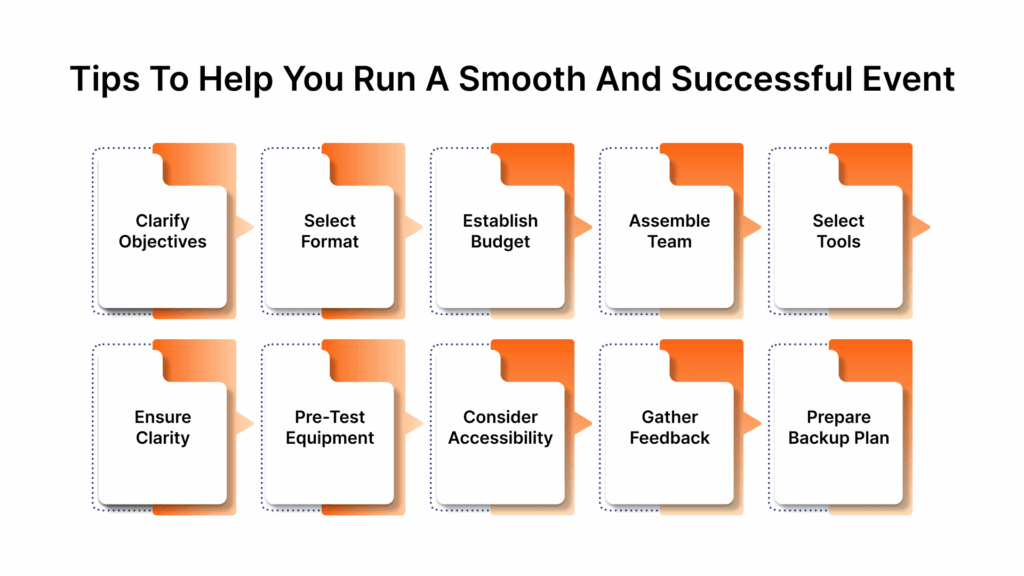
Planning an event is about making sure every part, from the first guest registration to the last session wrap-up, runs without a hitch. Keeping things organized and clear from the start will save you time, money, and stress.
Here are 10 straightforward tips to help you stay on track and deliver a successful event:
Know Your Goals Early: Be clear on why you’re holding the event. Is it to promote a product, bring people together, or share knowledge? Clear goals shape every other decision.
Choose the Right Format: Decide whether your event should be in-person, virtual, or hybrid. Base it on your audience’s preferences, budget, and the nature of the content.
Set a Realistic Budget: Map out your costs early. Include venue, tech, food, travel, staff, and a buffer for unexpected expenses.
Build a Reliable Team: Assign clear roles. Know who’s handling registration, managing speakers, checking tech, and looking after guests on the day.
Use the Right Tools: Use event management software like Wiz-Team’s Event-Works to manage registration, scheduling, access, and communication from one place.
Communicate Clearly: Keep attendees and staff updated before, during, and after the event. Use emails, SMS, or an event app to share schedules and any changes.
Test All Equipment Beforehand: Don’t leave anything to chance. Test your microphones, cameras, screens, and Wi-Fi the day before.
Think About Accessibility: Make sure your event is easy to attend for everyone. Consider things like ramps, captions, dietary options, and support for different languages.
Collect Feedback: Ask for feedback through simple surveys or post-event polls. It helps you learn and improve for next time.
Always Have a Backup Plan: From no-show speakers to bad weather, plan for what could go wrong, and know how to respond without scrambling last minute.
While these tips provide a strong foundation, the right tools can take your planning to the next level. Here’s how Wiz-Team’s Event-Works platform supports event professionals across industries.
How Wiz-Team Helps You Plan and Manage Events Better
Planning events requires more than just good ideas. You need a system that keeps things organized, makes tasks easier, and gives you control from start to finish. Having the right tools in place can save you time, reduce stress, and help your team deliver a polished experience. That’s where Wiz-Team’s Event-Works platform comes in.
Event-Works is a modular event management platform built to support planners across industries. Whether you’re organizing a virtual summit or a complex international event, the platform adapts to your needs and simplifies execution.
Here’s how Event-Works makes planning easier and more effective:
Centralized Registration and Guest Management: Collect all your attendee details through fully customizable forms. Manage individual or group registrations, track attendance, and update guest lists in real-time.
Accreditation and Access Control: Design badges, assign access levels, and control who enters which zones. Whether you’re managing a VIP area or workshop breakout, you have full control over movement and security.
Workforce and Volunteer Coordination: Assign shifts, manage availability, and send real-time updates to staff and volunteers. A dedicated portal helps your team stay organized before, during, and after the event.
Integrated Communication Tools: Send emails, reminders, and SMS updates directly through the platform. Set up automated messages for confirmations, last-minute changes, or post-event surveys.
Travel and Accommodation Logistics: Track arrivals and departures, manage room bookings, and handle transport schedules. Perfect for large-scale or international events.
Live Data and Reporting: Access real-time dashboards to monitor check-ins, session traffic, or guest engagement. Export detailed reports for post-event insights or internal reviews.
Mobile Access for Attendees: Offer attendees a mobile-friendly event guide with schedules, speaker bios, push notifications, and live updates.
Secure, GDPR-Compliant Setup: Handle participant data with confidence. Event-Works follows strict security and privacy standards, including GDPR compliance and user-specific access controls.
Conclusion
Knowing the different types of events and how to approach each one helps you plan with purpose. It allows you to match your goals with the right format, avoid common roadblocks, and deliver a better experience for everyone involved. From corporate launches to community gatherings, getting the details right is what sets successful events apart.
Wiz-Team’s Event-Works platform gives you the tools to manage every part of your event clearly and efficiently. Whether you’re working with a small team or managing thousands of attendees, it helps you stay organized, focused, and in control from start to finish.
Ready to plan smarter and deliver events that work? Contact Wiz-Team today and see how Event-Works can support your next event.
#WizJourney

